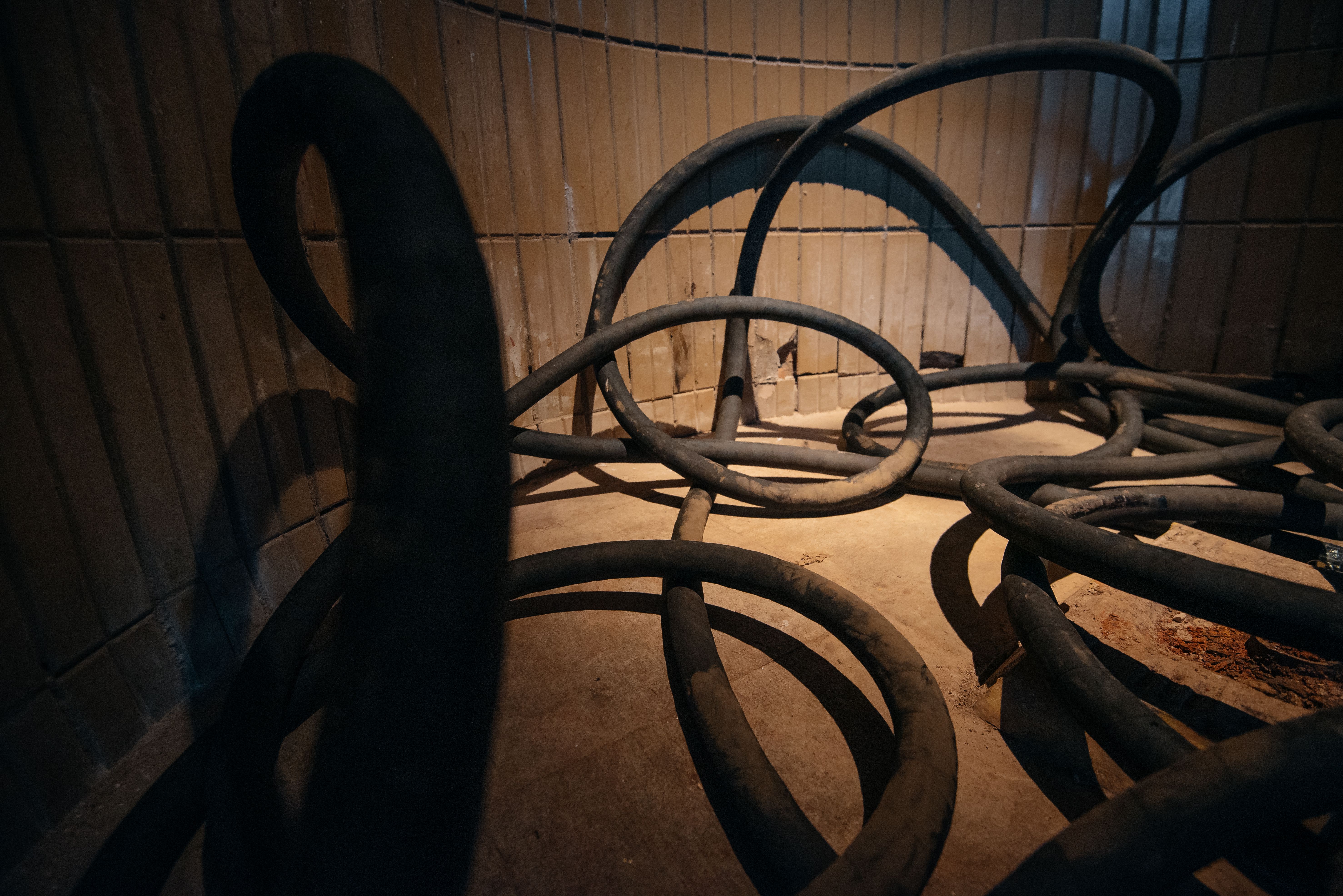
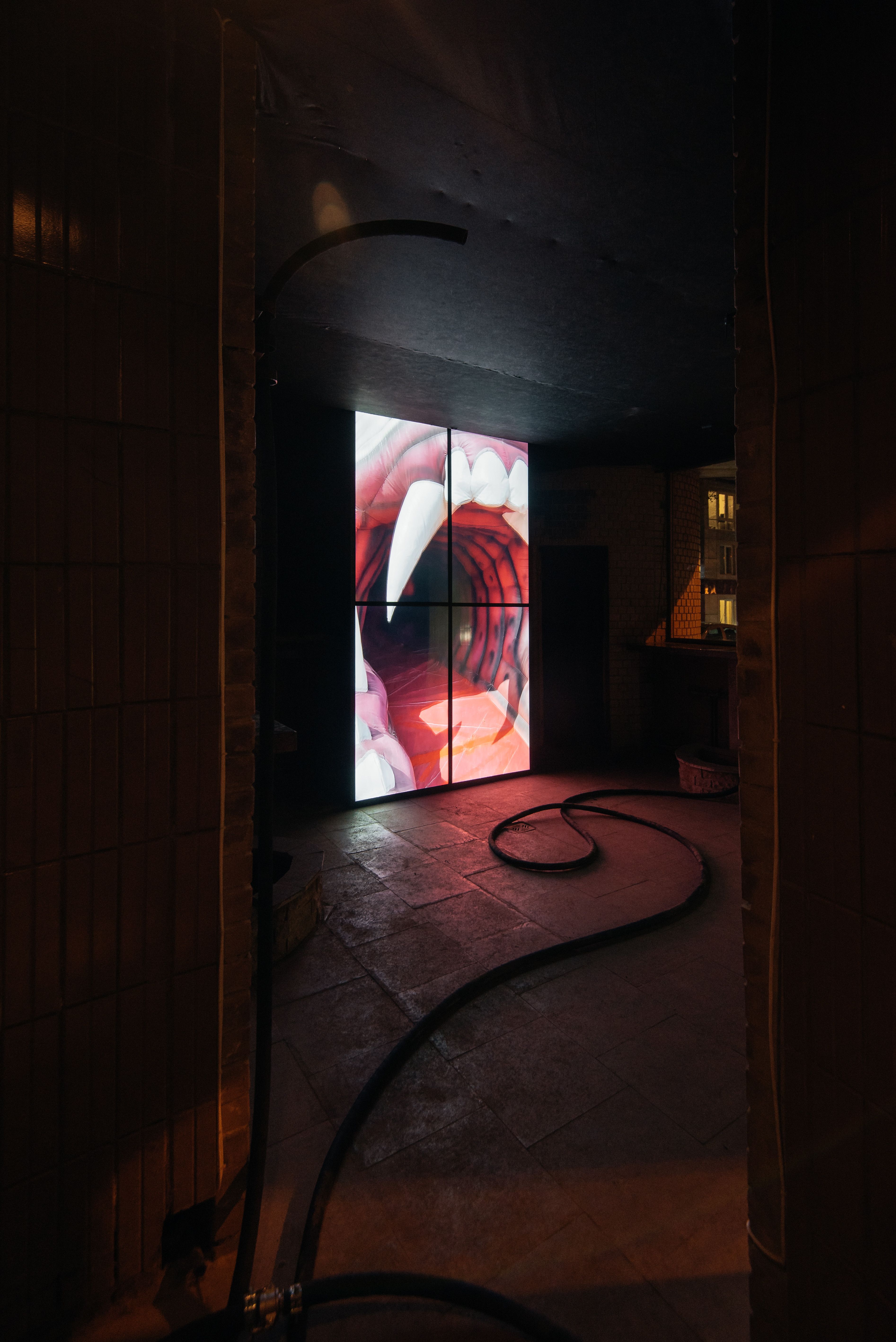
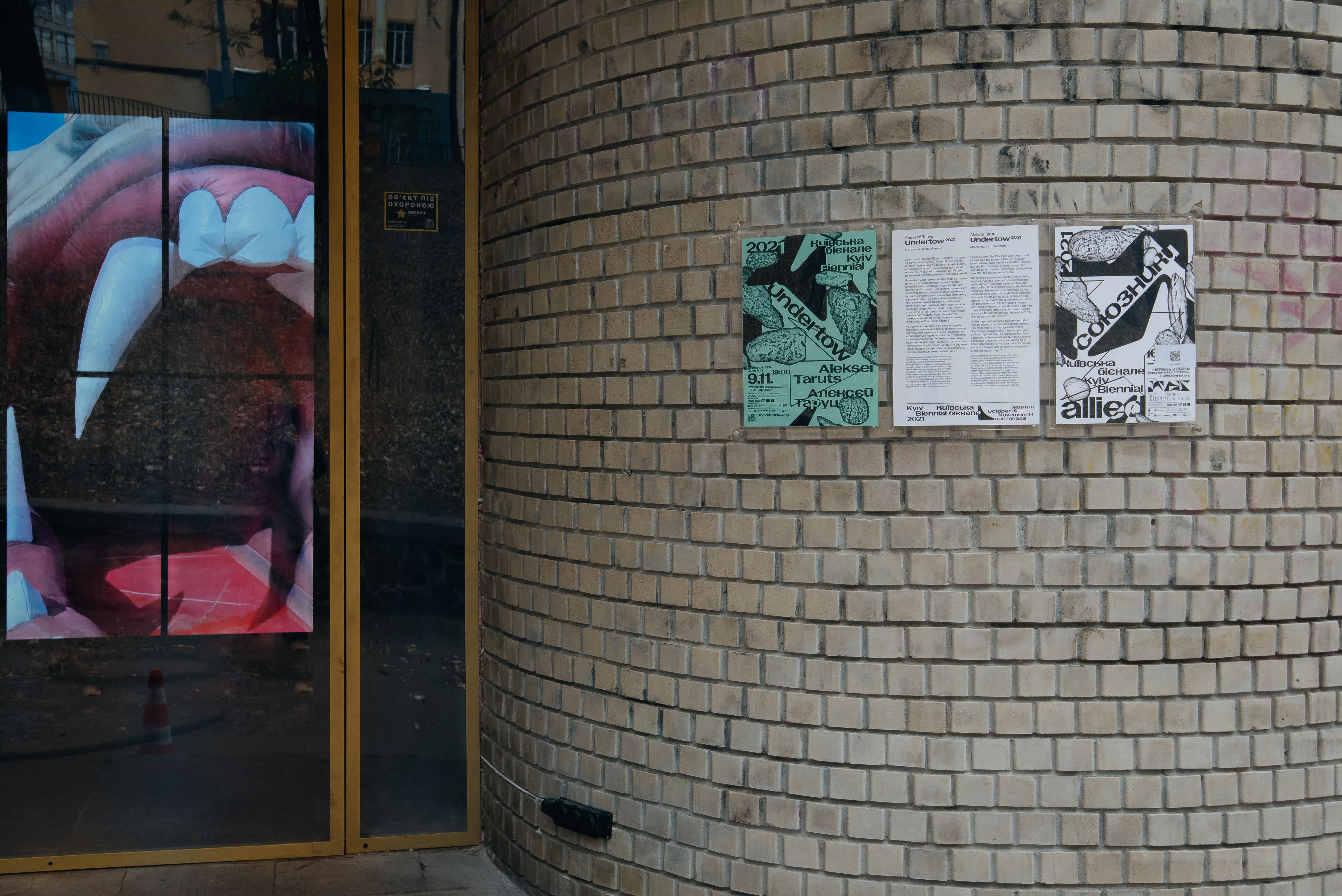
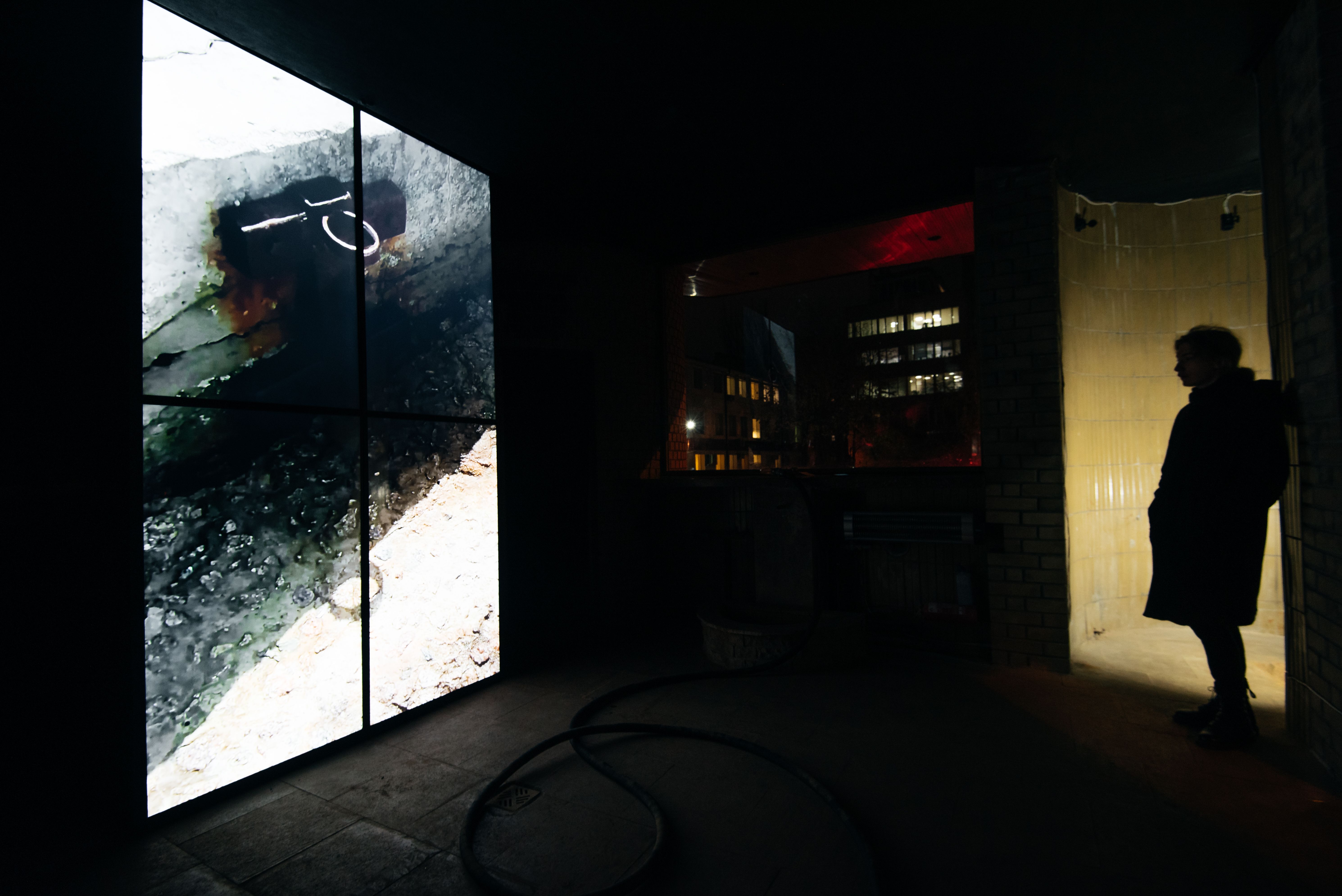
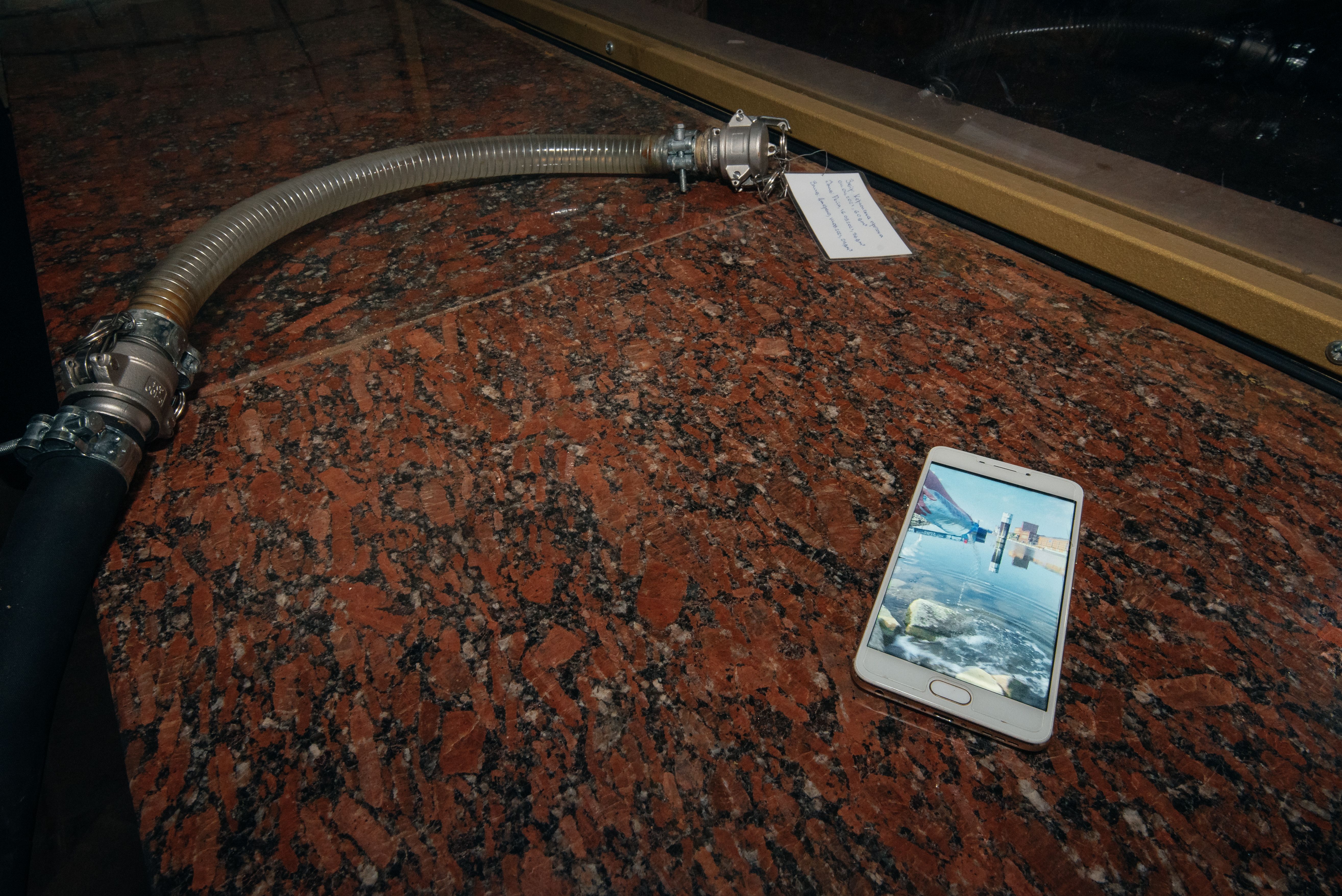
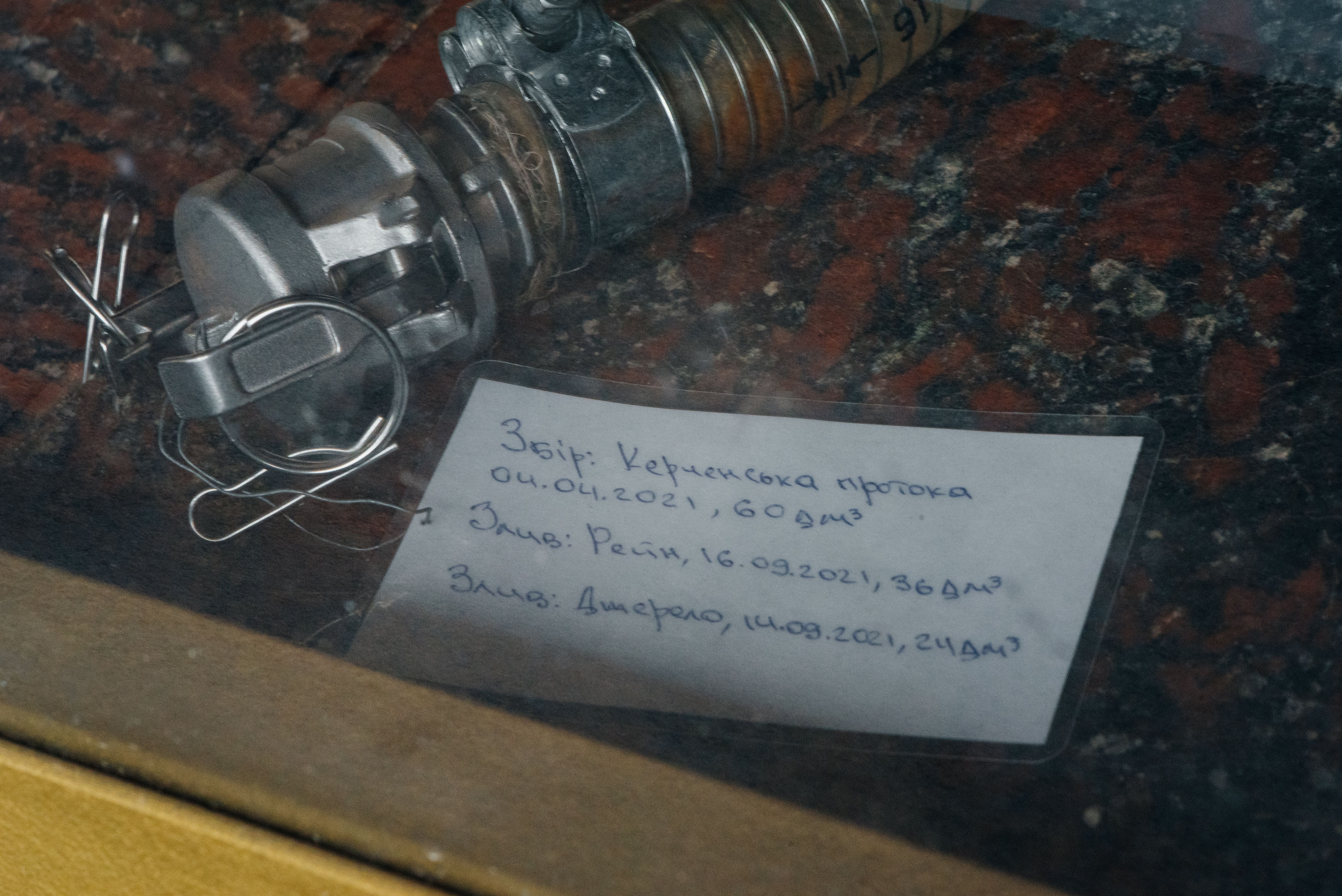
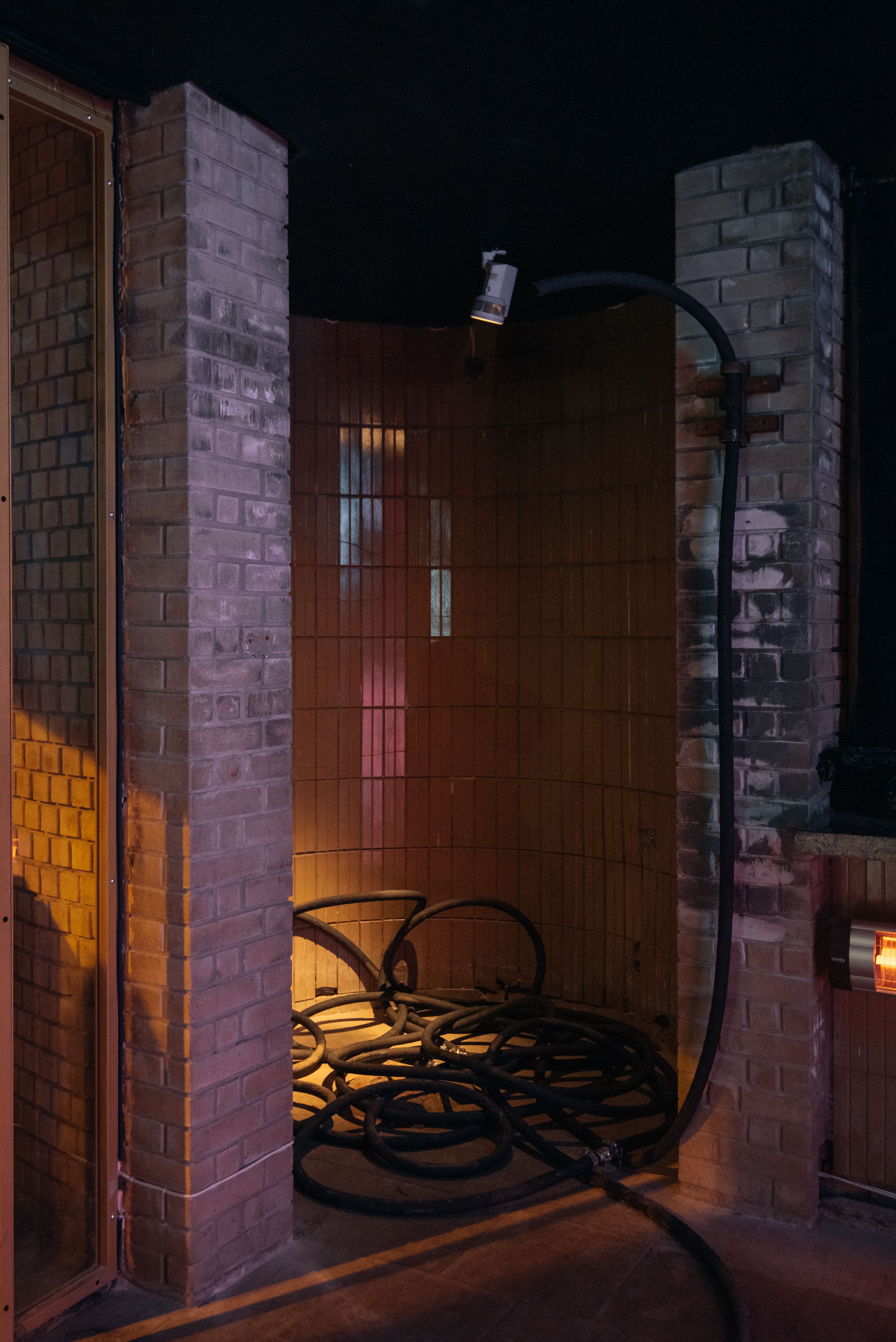
2021
Badischer Kunstverein (Karlsruhe, Germany); Dzherelo (Kyiv, Ukraine)
In 2021, on the brink of the Russo-Ukrainian war, in collaboration with Aleksei Taruts, we created the Undertow project which examined resource-based geopolitics and territory appropriation. 100 liters of Black Sea water were collected near the Kerch bridge in the annexed Crimea, carried across the unrecognized border between the peninsula Russia has claimed as its own and continental Ukraine, smuggled into Germany and displayed there in an industrial segmented hose, with the length of its segments equal to segments of the North Stream-2 pipe, constructed to deliver natural gas from Russia to Germany bypassing the Ukrainian territory. After the show, the water was poured into the Rhine, thus creating an international enclave of minerals and glimpses of political uncertainty. The hose segments wound off in the exhibition space served as a reservoir for a cursed geopolitical liquid: sea water collected from the strait of Kerch that washes against the Crimean peninsula. The resource is renewable as long as the piece is part of the exhibition complex. Historical events are ecological objects that appear in the framework of global industrialization processes – straits turned into military interfaces, rivers into autobahns, sea beds into transcontinental streaming platforms. The European borders happened to be washed out by a flux, creating a leak in a thalassocratic pax. Fossils are dead. Phantoms are gas. Have phantoms ever been more decorative?
2021
Badischer Kunstverein (Karlsruhe, Germany); Dzherelo (Kyiv, Ukraine)
In 2021, on the brink of the Russo-Ukrainian war, in collaboration with Aleksei Taruts, we created the Undertow project which examined resource-based geopolitics and territory appropriation. 100 liters of Black Sea water were collected near the Kerch bridge in the annexed Crimea, carried across the unrecognized border between the peninsula Russia has claimed as its own and continental Ukraine, smuggled into Germany and displayed there in an industrial segmented hose, with the length of its segments equal to segments of the North Stream-2 pipe, constructed to deliver natural gas from Russia to Germany bypassing the Ukrainian territory. After the show, the water was poured into the Rhine, thus creating an international enclave of minerals and glimpses of political uncertainty. The hose segments wound off in the exhibition space served as a reservoir for a cursed geopolitical liquid: sea water collected from the strait of Kerch that washes against the Crimean peninsula. The resource is renewable as long as the piece is part of the exhibition complex. Historical events are ecological objects that appear in the framework of global industrialization processes – straits turned into military interfaces, rivers into autobahns, sea beds into transcontinental streaming platforms. The European borders happened to be washed out by a flux, creating a leak in a thalassocratic pax. Fossils are dead. Phantoms are gas. Have phantoms ever been more decorative?






